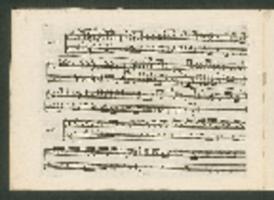

But that said, the Sixth remains perhaps the most congenial of all of Liszt’s symphonic transcriptions from a pianistic point of view.

The greatest problem facing the interpreter of Liszt’s transcription is the preservation of outward peace when the hands are being put through contortions, frequently involving the quiet stretching of elevenths. The historical details – and the title-page – of Liszt’s transcription are more or less identical to those for the Fifth Symphony. Beethoven completed the work at about the same time as the previous symphony, in 1808. It was probably the first of the Beethoven symphonies that he set himself to transcribe, and he played at least the last three movements at many a public concert. Listen to Beethoven’s Septet Transcribed for Piano by Liszt.Liszt had a great success with the Sixth Symphony from the beginning. Third movement: Adagio molto e cantabile (14'32").First movement: Allegro ma non troppo, un pocco maestoso (12'45").

Ninth Symphony with Choir in D Minor - Opus 125 - 1822 - 1824 - Transcription for Piano
Fourth movement: Allegro vivace (8'05"). Third movement: Tempo di menuetto (5'24"). Second movement: Allegretto scherzando (3'34"). First movement: Allegro vivace e con brio (7'39"). Fourth movement: Allegro con brio (8'22")Įighth Symphony in F Major - Opus 93 - 1812 - Transcription for Piano. Seventh Symphony in A Major - Opus 92 - 1811 - 1812 - Transcription for Piano First movement: Poco sostenuto - Vivace (13'23"). Second movement: Andante molto mosso (11'37"). First movement: Allegro ma non troppo (10'12"). Sixth Symphony in F Major - Known as "Pastoral" - Opus 68 - 1806 - 1808 - Transcription for Piano Third and fourth movements: Allegro - Allegro (17'01"). Second movement: Andante con moto (8'05"). First movement: Allegro con brio (6'14"). Fourth movement: Allegro ma non troppo (6'11")įifth Symphony in C Minor - Opus 67 - 1807 - 1808 - Transcription for Piano. First movement: Adagio - Allegro vivace (17'42"). Fourth movement: Finale - Allegro molto (9'38")įourth Symphony in B Flat Major - Opus 60 - 1806 - Transcription for Piano. Third movement: Scherzo - Allegro vivace (5'50"). Second movement: Marcia funebre - Adagio assai (12'11"). First movement: Allegro con brio (14'27"). Third Symphony in E Flat Major - Known as "Eroica" - Opus 55 - 1802 - 1804 - Transcription for Piano Fourth movement: Allegro molto (10'18"). Third movement: Scherzo - Allegro (3'24"). First movement: Adagio - Allegro con brio (11'10"). Second Symphony in D Major - Opus 36 - 1801 - 1802 - Transcription for Piano Third and fourth movements: Menuetto - Allegro molto e vivace - Adagio - Allegro molto e vivace (11'43"). Second movement: Andante cantabile con moto (6'32"). First movement: Adagio molto - Allegro con brio (7'53"). Listen to Beethoven symphonies, transcribed for piano by Franz Liszt.įirst symphony in C Major - Opus 21 - 1799 - 1800 - Transcription for Piano On this page you can listen to Beethoven transcriptions for piano of:įreely adapted the airs of Beethoven's seventh symphony.ĭid the variations on opus 35, "15 Variations and Fugue pour Piano on the theme of Creatures of Prometheus". Amongst these are Beethoven’s nine symphonies and the famous Liszt opus. Listen to Some Transcriptions of Beethoven’s WorksĪdapted numerous works for the piano. BEETHOVEN LISZT SYMPHONY 5 HOW TO
It is up to you to discover as you listen to Beethoven Read more about what midi files are and how to listen to them. The sounds, therefore, do not come from an orchestra, but the result is often pleasantly surprising. The music is created by electronic sounds and instruments, which are sequenced by musicians who become the author. The following files to listen to are in midi format. With 's website, you can listen to 928 midi files and 389 mp3 files of works by Ludwig van Beethoven.







 0 kommentar(er)
0 kommentar(er)
